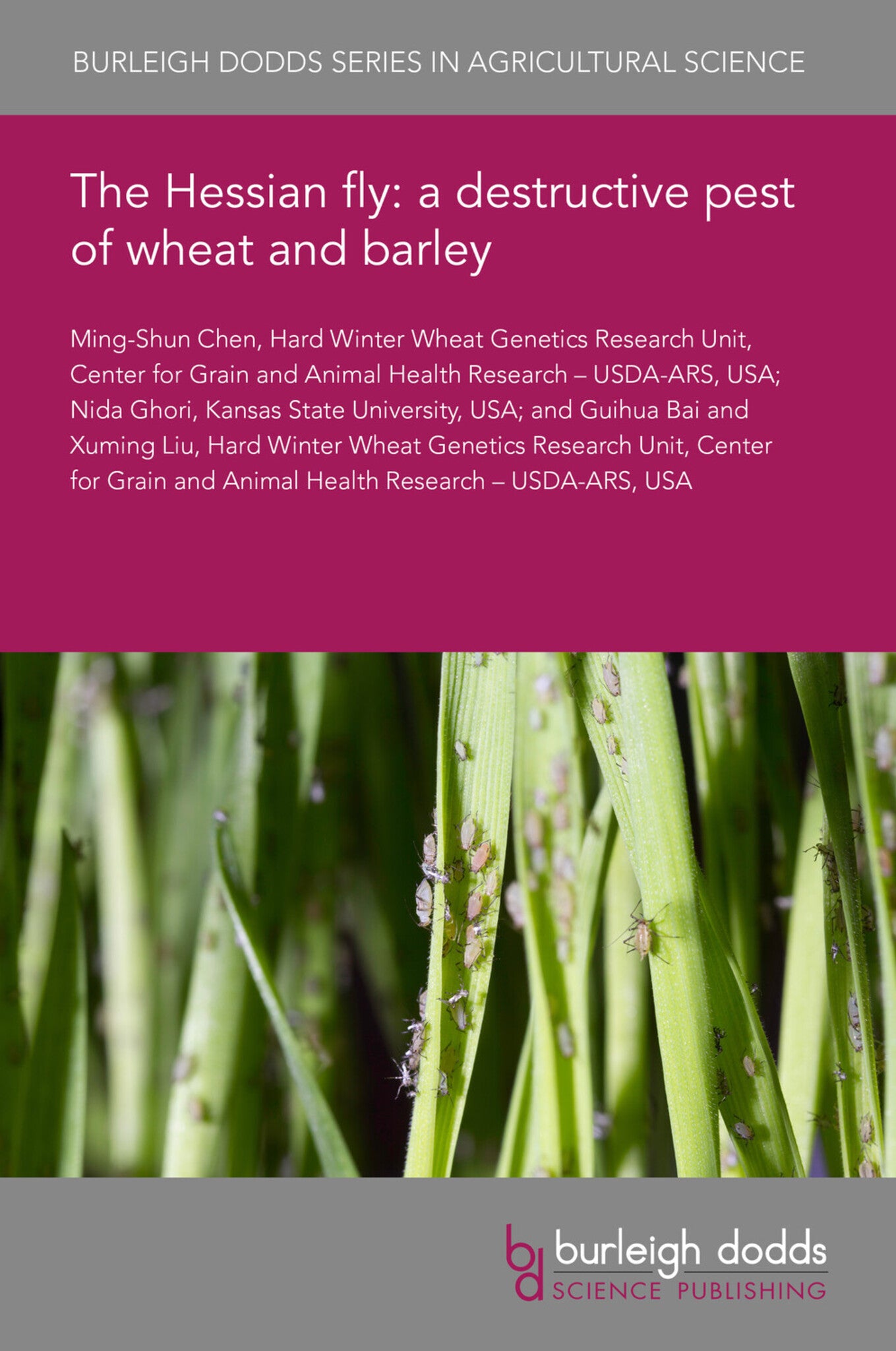We're sorry. An error has occurred
Please cancel or retry.
The Hessian fly: a destructive pest of wheat and barley

Some error occured while loading the Quick View. Please close the Quick View and try reloading the page.
Couldn't load pickup availability
- Format:
-
01 May 2023

Hessian fly is a global pest of wheat. Traditional control methods for this pest include implementing fly-free planting dates, stubble plow down and use of resistant cultivars. These methods face challenges due to changes in climate and cultural practice. Fly-free dates are no longer useful or need to be modified due to fly phenology shifts with increasing temperatures. Volunteer wheat destruction and stubble plow-down are no longer feasible due to the prevalence of no-till farming. Although plant resistance has been a cornerstone of fly management, many fly resistance genes lose effectiveness under higher temperatures. New fly-resistant genes effective under elevated temperatures need to be identified and markers for these genes developed. Advances in understanding of plant resistance mechanisms and fly attack mechanisms may result in novel technologies for Hessian fly control in the future, but the requisite molecular studies are still at very early stages and need to be strengthened.

TECHNOLOGY & ENGINEERING / Pest Control, Pest control / plant diseases, TECHNOLOGY & ENGINEERING / Agriculture / Sustainable Agriculture, TECHNOLOGY & ENGINEERING / Agriculture / Agronomy / Crop Science, Agronomy and crop production, Sustainable agriculture, Agricultural science

- 1 Introduction
- 2 Distribution and biology
- 3 Feeding mechanisms and damage
- 4 Hessian fly monitoring and population dynamics
- 5 Advances in integrated management
- 6 Advances in identification and mapping of resistance genes
- 7 Advances towards understanding the mechanism of wheat resistance to Hessian fly
- 8 Advances towards understanding the mechanisms of Hessian fly biotype differentiation
- 9 Climate change and Hessian fly management
- 10 Conclusion and future trends
- 11 Acknowledgements
- 12 References



